
Go back in time at one of California’s last great beach towns
- Share via
We’re going to talk about Carpinteria’s beach, its tar, its weed, its avocados, its tallest pine tree and the herd of alpacas in its hills. But first I should admit that I’m biased.
This little beach town between Ventura and Santa Barbara is where my wife and I spent our first two years of married life, strolling the coastal bluffs, biking the back roads, eating enchiladas on Linden Avenue and reading the local weekly’s misdemeanor-filled police blotter.
Now we live in Los Angeles, where the police blotter is a different kettle of fish. So every time we find ourselves on the way back from a trip north, we do our best to wedge in a day, or half a day, or even an hour, to reconnect with the town locals know as Carp.
Despite its many obvious charms, Mary Frances said the other day that Carpinteria “is not really on everybody’s radar. I like that farmland-meeting-ocean thing too.”
After so many quick stops, it was a luxury to spend two September days and nights in town. The stay made clear how much has changed in Carpinteria (population 12,950) and how much hasn’t.
The greatest constant is Linden Avenue, the main street that takes you down to the water’s edge, serving as the heart of town and subject of elementary school history projects. Its commercial core is a stretch of eight blocks from Carpinteria Avenue to the beach that’s highly walkable — except for when an Amtrak train rolls in, pauses for a moment, then rolls out again as kids and parents wait on the sidewalk, covering their ears.
Carpinteria City Beach, where Linden ends, is a lifeguard-monitored haven of gentle waves that local boosters for decades have called the “world’s safest beach.” A couple of volleyball courts are laid out on the sand to the left. Beyond them wait the open space, campsites and mile-long shoreline of Carpinteria State Beach, a dominant presence since the 1930s.
Another Carpinteria constant, at least since the 1980s, is the biggest event of the year: the California Avocado Festival, created to capitalize on one of the many fruits that thrive in the local climate. This year’s festival is coming up Oct. 6-8, with live music on four stages and a guacamole contest.
One thing we love about Carp is that downtown still feels like a place for flip-flops and beach cruisers, which seems ridiculous, given the median home price of $1.3 million and the row of beachfront mansions out on gated Padaro Lane whose owners have included George Lucas, Kevin Costner, Ellen DeGeneres, Portia De Rossi, Ashton Kutcher and Mila Kunis.
But I’ve never seen those mansions, except at a distance from the beach.
In town, you’ll find two Motel 6s (we like the one on Carpinteria Avenue), one Best Western, one Holiday Inn Express, a few independent budget hotels and zero fancy resorts. At the Spot, a cash-only shack that’s the nearest eatery to the beach, you can get a burger for $6.
Amtrak’s Pacific Surfliner trains stop five times daily at 475 Linden Ave., but there’s no train station, just a platform, a parking lot and public restrooms.
That said, the town is definitely changing.
On Carpinteria Avenue, a skate park opened in August next to City Hall. A farm-to-table restaurant called the Good Plow has taken over the old Fosters Freeze space. In coming months, the Santa Cruz Island Foundation’s Chrisman California Islands Center, a public education space devoted to the eight Channel Islands, is due to open at Linden and Carpinteria avenues.
On the southern side of Linden, workers are putting up a mixed-use development of shops, restaurants and services on the block where the old hardware store stood for about a century.
Planning your weekend?
Stay up to date on the best things to do, see and eat in L.A.
On the northern side of Linden, where the Palms restaurant for generations invited diners to grill their own steaks, the front door is now locked, closed since the early weeks of the pandemic. But in June, a restaurateur from New York bought the Palms. The neighbors are crossing their fingers.
Meanwhile, along Foothill Road (a.k.a. California 192), a wave of cannabis cultivators has moved into the nursery fields once dominated by flower growers. Here and there along Foothill you’ll sniff that skunky weed scent, including the area around Carpinteria High School.
To start a vigorous conversation among locals, just bring that up.
Or sidestep the vigorous conversation and take a bike ride on the bluffs south of town. Or a walk in the Carpinteria Salt Marsh Nature Park just north of town. Or book a visit to the Canzelle alpaca farm in the foothills (see below), where you may be permitted to feed an alpaca via mouth-to-mouth carrot transfer.
Then meander on Linden. Browse Rincon Designs surf shop (which rents boogie boards, surfboards and wet suits), check out art and crafts at Seaside Makers Collective or fondle old records at Murphy’s Vinyl Shack, where owner Kevin Murphy was cranking Van Morrison when I stopped by.
The pandemic was tough, but “Linden is a happening street nowadays,” Murphy told me. “There’s a family atmosphere here. My kids come here — they’re in their 30s — and they say this is like a ‘Twilight Zone’ episode. A throwback.”
Alas, there’s no Carpinteria Herald police blotter to read these days. The Herald died in the ’90s. But the Herald’s successor, the Coastal View News, still sends reporters out to do person-on-the-street interviews. That’s what one lady on Linden Avenue thought I was doing when I showed up on the sidewalk with notebook and camera.
“Are you the guy that asks questions?” she said, blocking my path.
Um, yes?
“No,” she said. “The guy from the Coastal View News?”
I tried to let her down gently.
Here are 17 things, new and old, to do in Carpinteria.
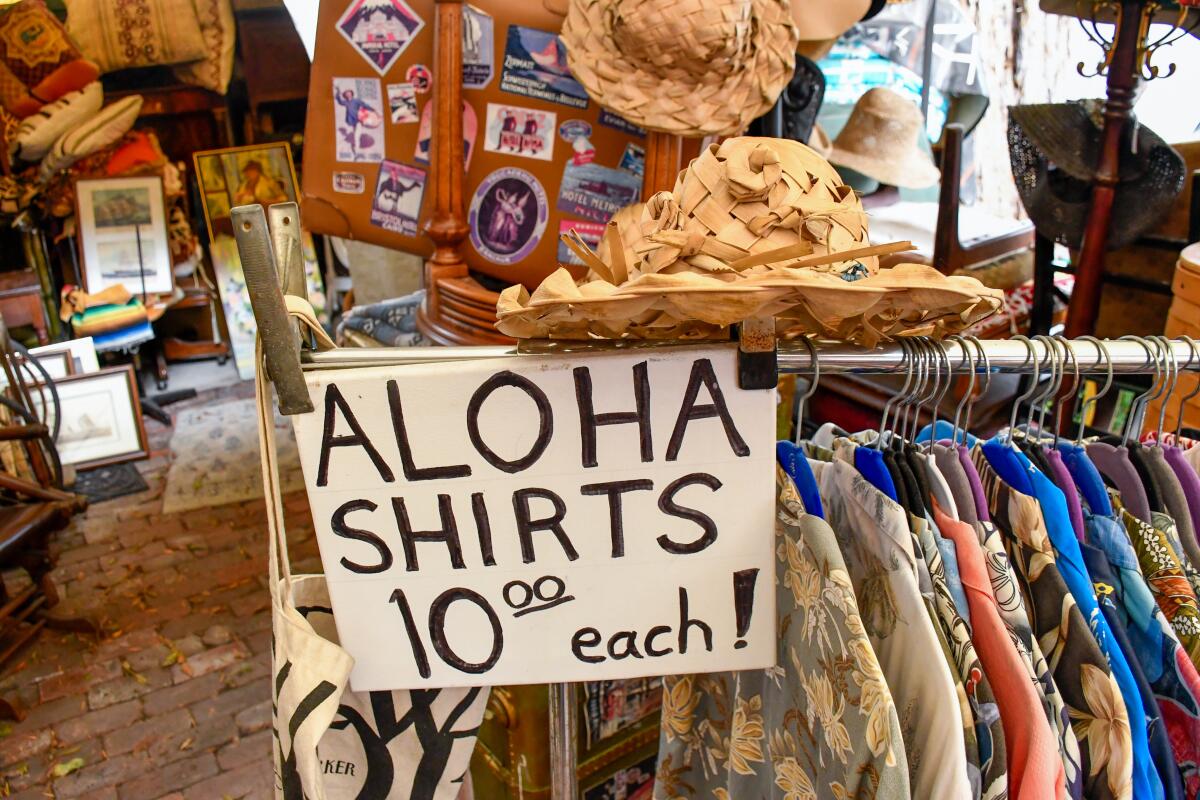
Forage for treasure at Angels Antiques
The Angels hours are sometimes irregular, but it is usually open on weekends.
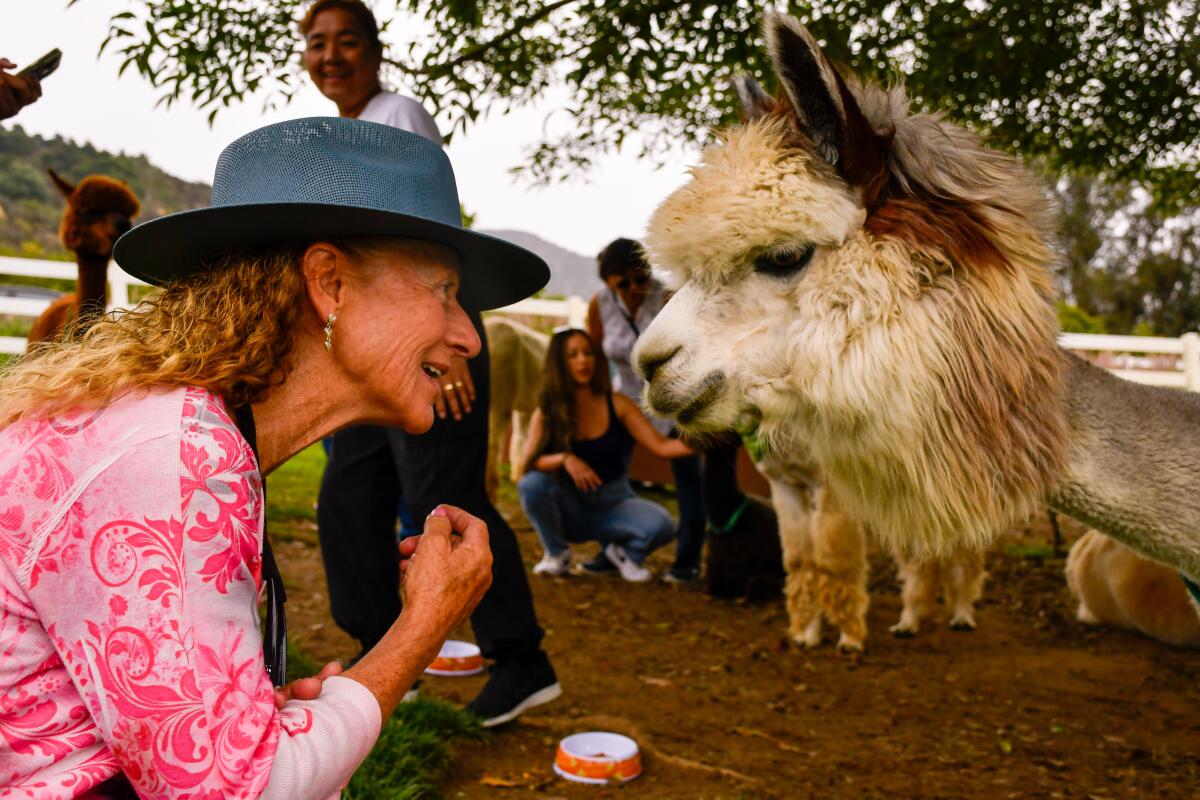
Nuzzle an alpaca on a hillside ranch
Besides them, the tour includes two llamas, one black sheep, one water buffalo and a peacock. The alpacas get fleeced every spring.
“They spit when they’re afraid or if they’re jealous,” guide Karen Putnam said.
Alpacas are native to South America. The Lonson family, owners of the farm, acquired its first alpacas about 20 years ago. Since the animals have mostly mellow dispositions and only bottom teeth, they’re not much of a bite threat.
Under Putnam’s direction, a dozen of us took turns petting, patting, nuzzling the animals, then feeding them carrots by hand — and, in some cases, mouth to mouth.
One of my fellow visitors was Lesly Mejia, who had come to the ranch once before with her boyfriend. This time, the Angeleno had brought her parents to commune with the alpacas. “I had to,” Mejia said. “They’re my favorite animals. No. 1, they just look cute and silly. And you don’t see them anywhere else.”
Tours are offered Fridays through Sundays only. To join a group tour, the price is $25 to $30 per person. Advance reservations are required. Children are welcome, dogs are not. And yes, there’s a gift shop with merch.
Also, for $38 to $250 (depending on the size of your group and how much space you want), you can bring a picnic and eat on the deck of the barn, looking out at the valley and the Pacific.
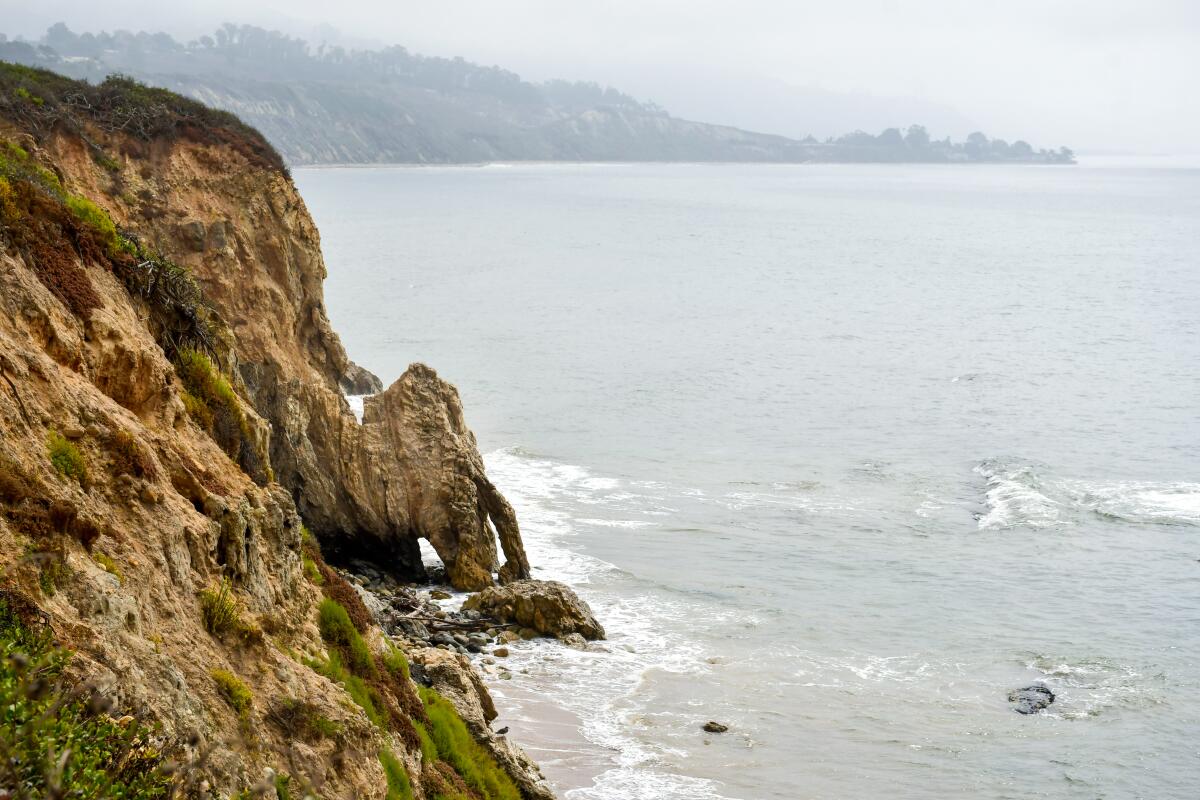
Walk the bluffs and see some seals
Happily, a community campaign to acquire and protect the area succeeded in 1998, with 52 acres being set aside as the Carpinteria Bluffs Nature Preserve. There’s room to walk or bike across meadows and stand atop eucalyptus-shaded cliffs looking down at a bit of beach that serves as a seal sanctuary even though it’s right next to an oil platform.
If you make your way down to the public beach or Tar Pits Park, you’ll eventually come across bits of tar underfoot. This is where the area’s Chumash people caulked their canoes, and the seepage is why Spaniards later nicknamed the place “the carpenter shop.” In the town’s early days, an asphalt mine operated here.
These days, if you approach or exit by way of Carpinteria and Bailard avenues, you’ll see the Tee Time golf center driving range, where it’s $10 for a bucket of 65 balls.

Stalk birds in a salt marsh
It’s more restful than thrilling, but the more you know, the more you see. The marsh, longtime local surfer Wayne Babcock told me, “is one of my zen spots. If you know where to go, on an incoming tide, you can watch all the ocean fish swim by.”
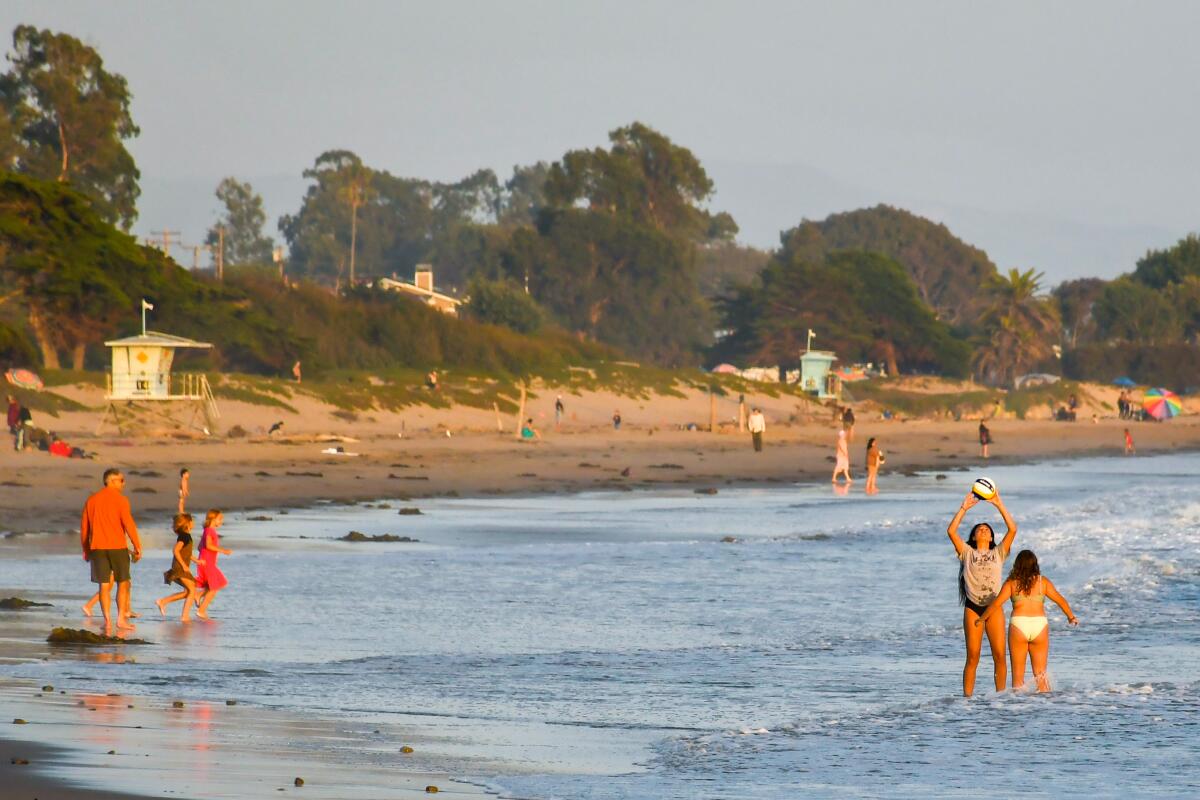
Camp by the shore at Carpinteria State Beach
This is why Carpinteria State Beach’s campsites book up fast every summer, filling up with tents, trailers and motor homes. But the rest of the year, especially midweek, the competition isn’t as stiff.
Whether you’re camping or not, try to get down to the beach around sunset so you can watch the dancing shorebirds throw long shadows. If you’re lucky, a few dolphins will swim close to shore and flash their fins.
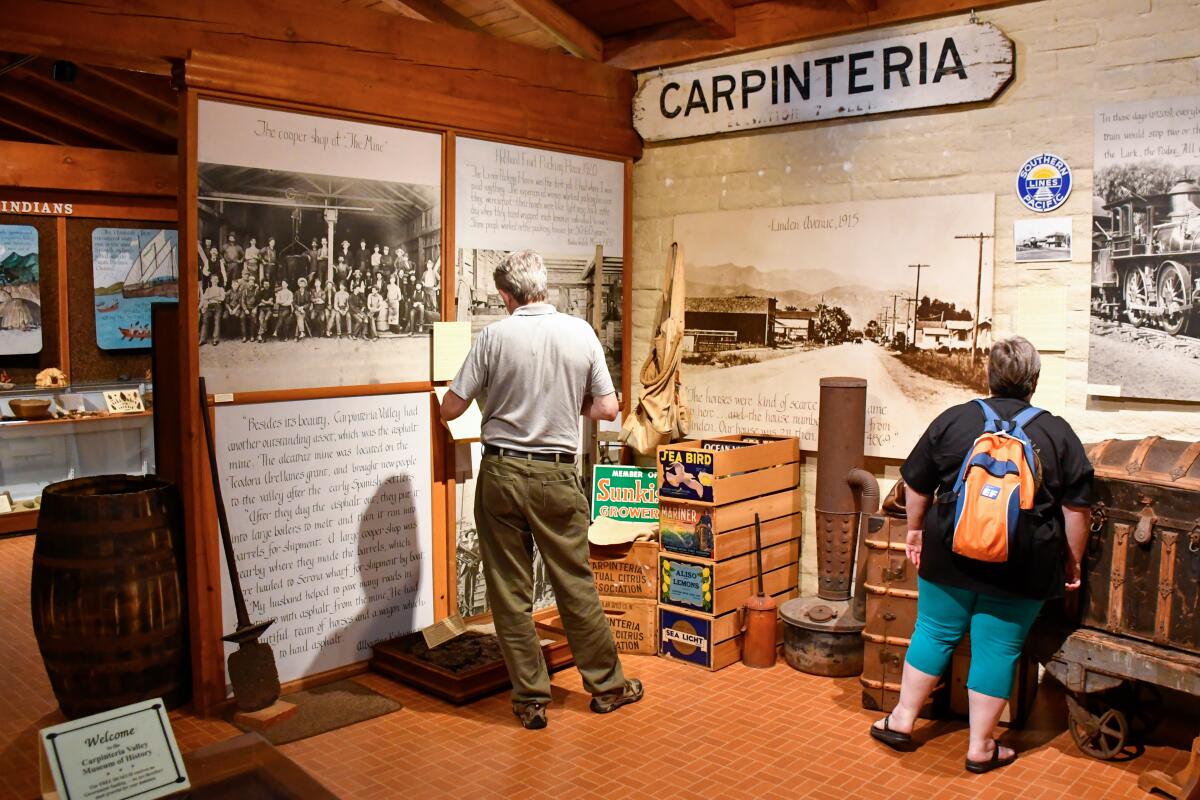
Learn a little valley history
On the tour I joined, museum vice president and docent Frank Crowe offered a tip for beach-walkers from out of town: Use Crisco to remove tar seepage from your toes afterward.
Open 1 to 4 p.m. Tuesdays through Sundays. Free.
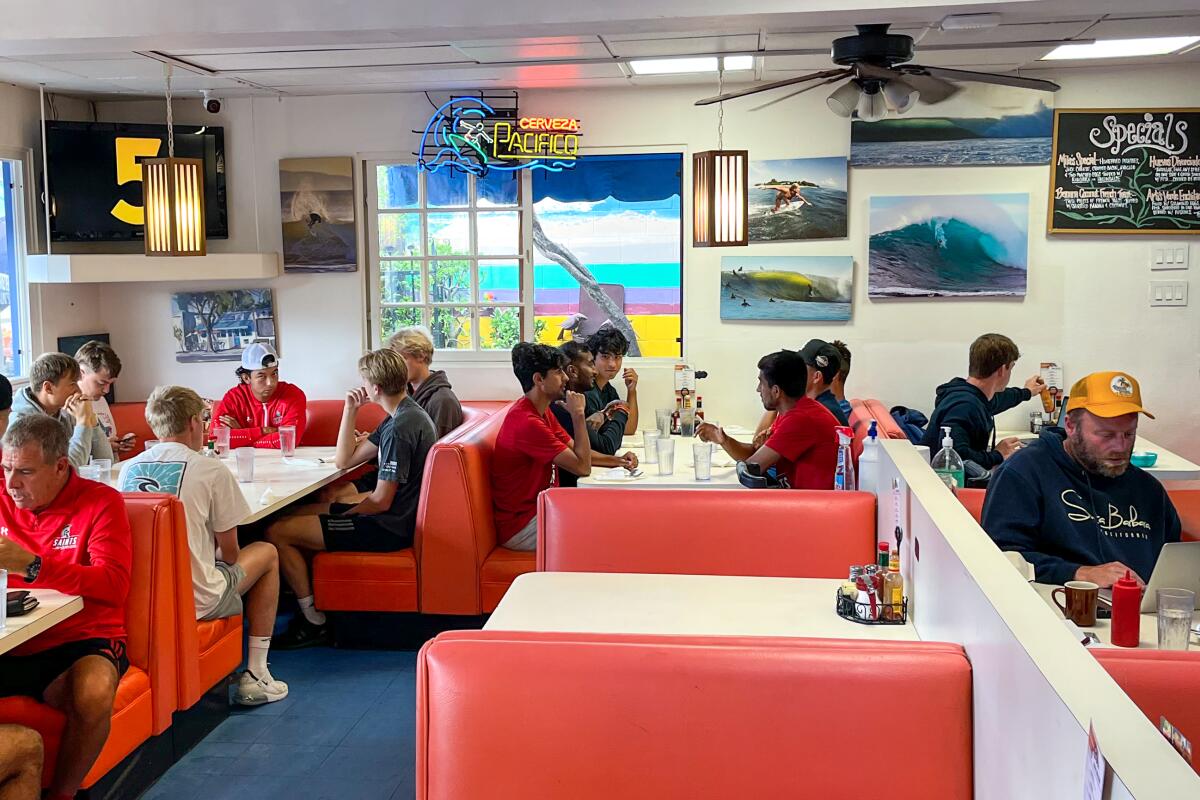
Order the pancakes at Esau's Cafe
This used to be one of two Esau’s locations, but the original in Santa Barbara closed several years ago. The dining room is spacious, and there’s a shady patio to the left.
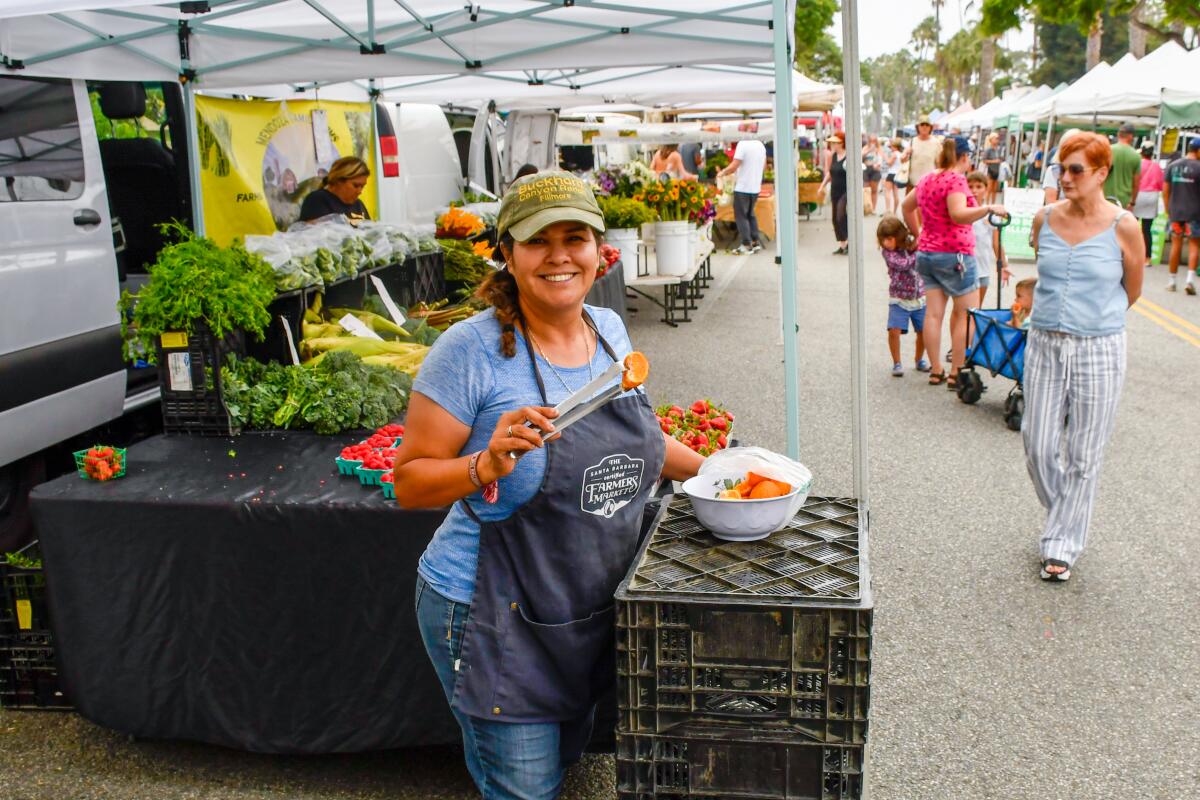
Taste mandarins at the weekly farmers market
The farmers market in Carpinteria makes a great afternoon errand. It’s run by the same organization that stages markets throughout the county, from 3 to 6:30 p.m. Thursdays.
The market takes up a block of Linden Avenue between 8th Avenue and Wullbrandt Way. Cars are banished from the city’s main drag, giving visitors an easy opportunity to rub elbows with locals. Goods include Hass avocados, lemons, sapotes, sausage, lamb and mandarin oranges from Buckhorn Canyon Ranch in Fillmore.
“They’re ugly on the outside, but they taste great. Low acid,” said Florina Avalos, handing out samples one recent Thursday.
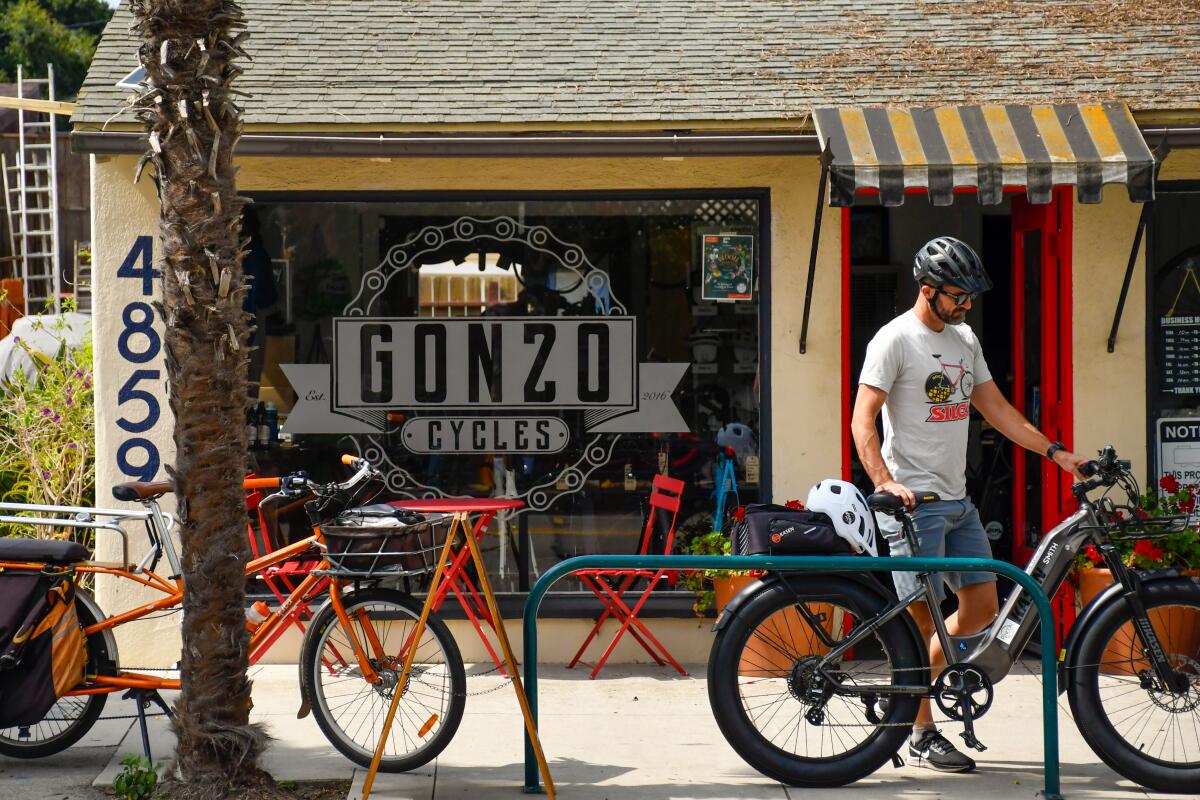
Roll away on a bike from Gonzo Cycles
If you don’t bring a bike, you can rent one from Gonzo Cycles on Carpinteria Avenue. I got an old-school Schwinn for $10 per hour; the shop, in town since 2016, also has e-bikes that start at $25 for an hour. Its rental fleet is about 15 bikes, mostly hybrids and beach cruisers, with helmets and locks available.
Need caffeine or carbs before or after? Brass Bird Coffee and Kitchen, which opened last year, is next door, open 6:30 a.m. to 3 p.m. daily.
Open 10 a.m. to 5 p.m. Monday to Friday, 10 a.m. to 4 p.m. Saturday and 10 a.m. to 2 p.m. Sunday.
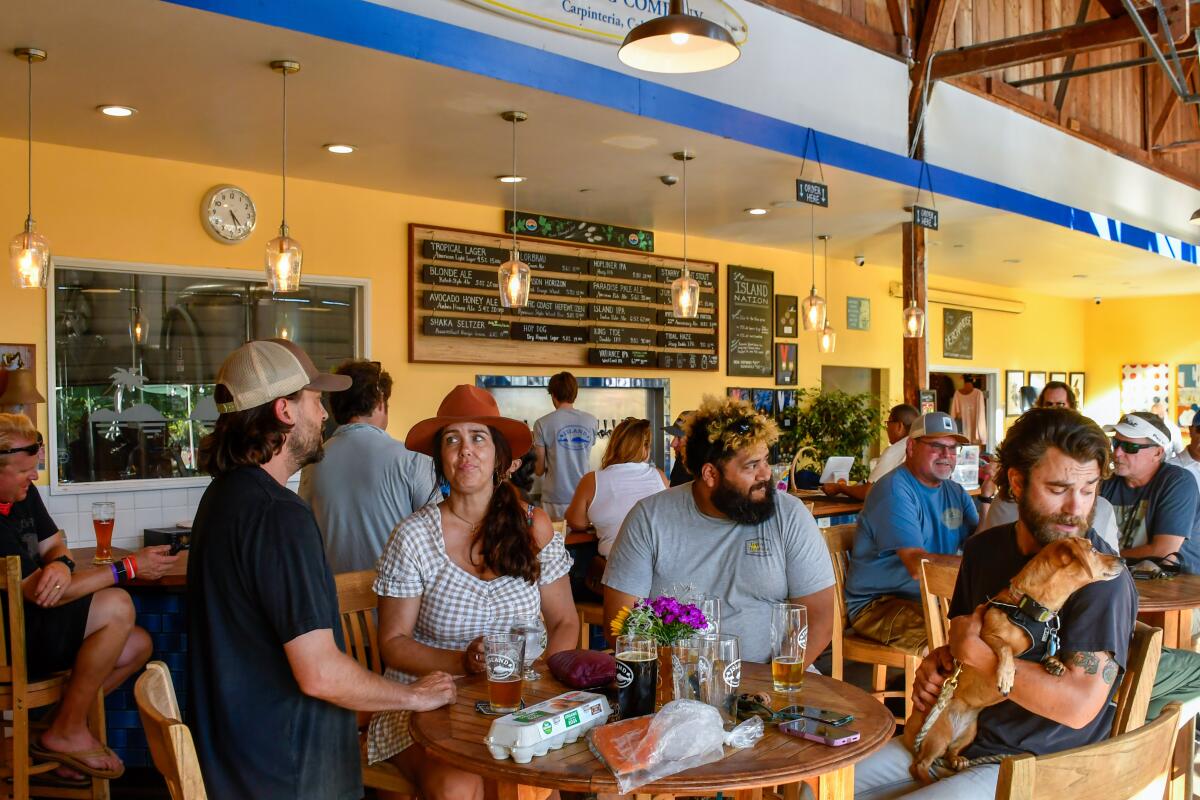
Sip something cold at Island Brewing Company
These are not welders returning to their shifts. They’re couples, families and friend groups, headed for Island Brewing, which serves up craft beers and meals in a rehabbed industrial space and patio along the tracks.
Live music and a food truck are usually part of the scene on Fridays, Saturdays and Sundays. This being Carp, one of the specialties is house-made avocado honey ale ($7 a pint).
If you’re a serious beer geek (and someone else is driving), you may need to compare the Island brews with those offered up at Rincon Brewery on Carpinteria Avenue, another popular night spot.
Open noon to 8 p.m. Monday, noon to 9 p.m. Tuesday through Thursday, noon to 10 p.m. Friday, 11 a.m. to 10 p.m. Saturday and 11 a.m. to 9 p.m. Sunday.
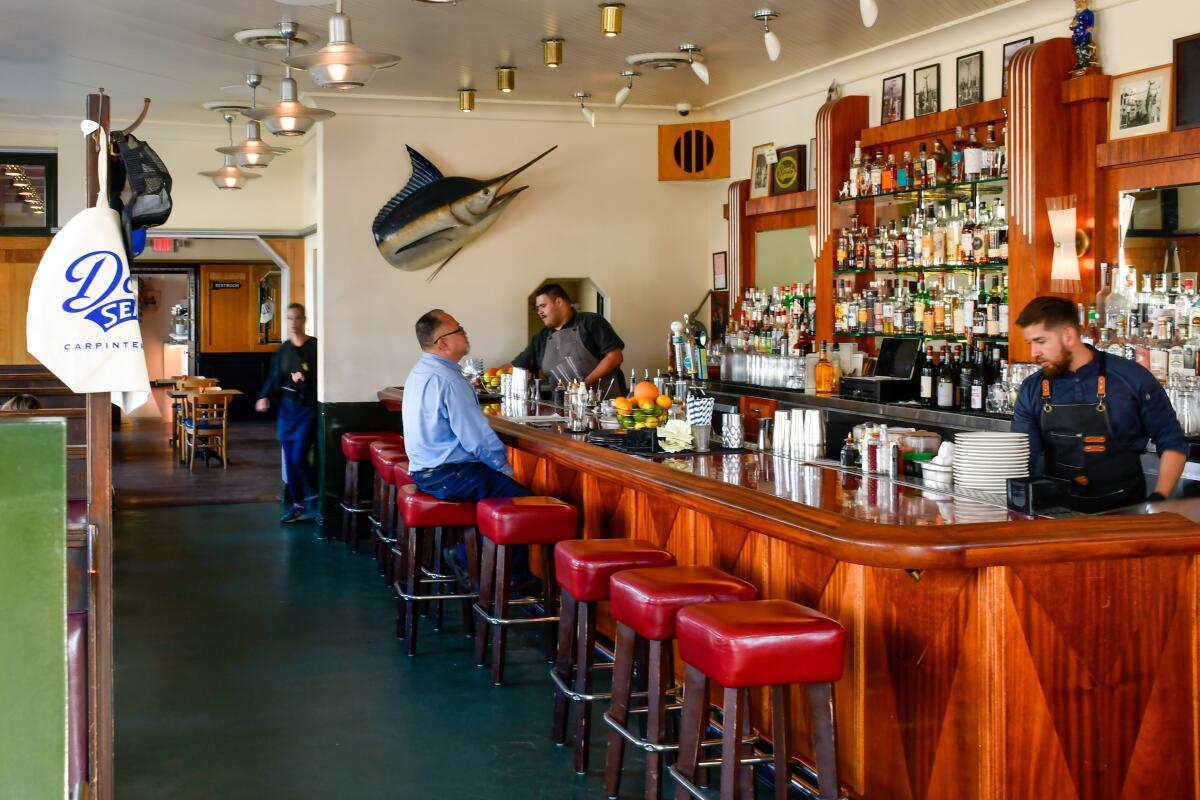
Eat at Little Dom's Seafood
I liked my bowl of gumbo, but next time, I’ll try the local seafood pot pie. Open 10 a.m. to 9 p.m. Sunday through Thursday and until 9:30 p.m. on Friday and Saturday.
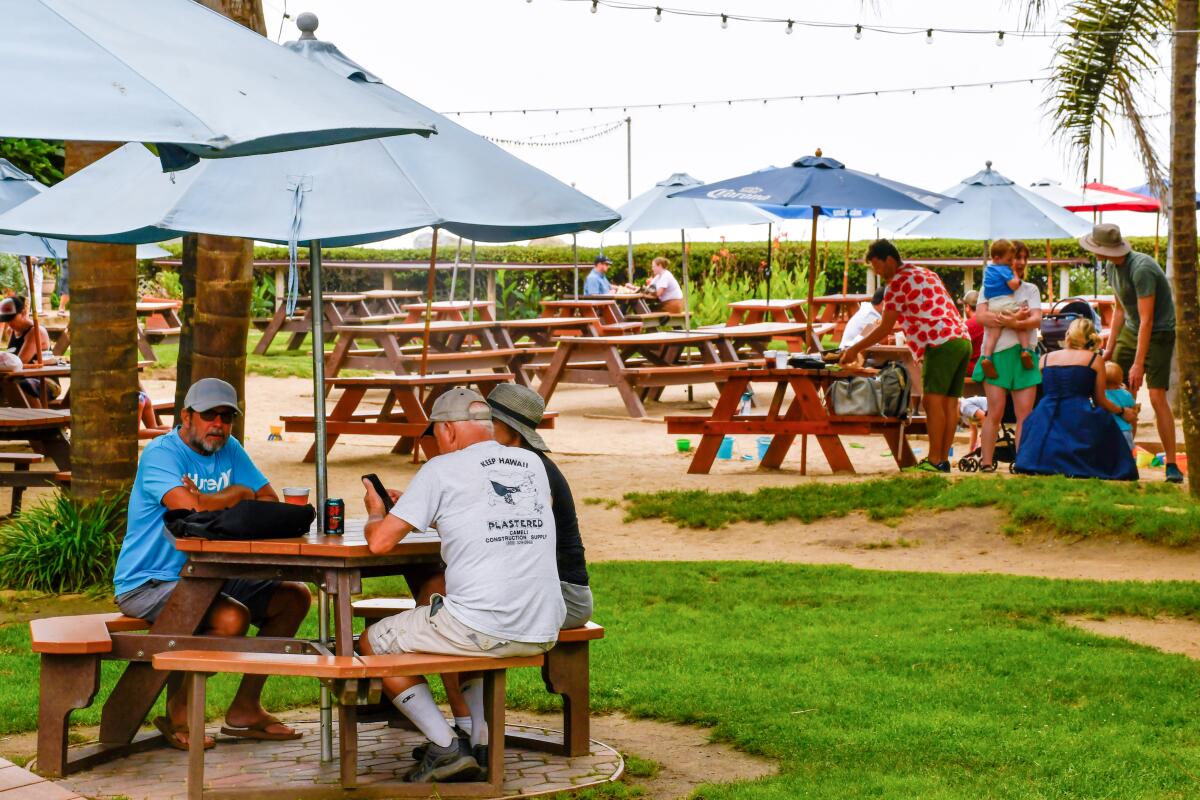
Grab a picnic table at the Padaro Beach Grill
The grill is open 11 a.m. to 8 p.m. most nights Sunday through Thursday, , extending to 8:30 p.m. on Friday and Saturday.
By the way, you’ll need to find a delicate way to tell your kids that Santa Claus no longer resides on Santa Claus Lane. Once upon a time (from 1948 until about 2000), there was a gargantuan rooftop Santa Claus sculpture (about 18 feet high), a tiny train set-up, a candy store and related shops.
But the holiday theme’s appeal waned over time as the 101 grabbed more traffic and wealthy homeowners moved into the area. Nowadays, there’s nothing particularly Christmass-y about the lane. For the last 20 years, the Santa structure has resided at 2801 Ventura Blvd. in Oxnard, right alongside the 101.
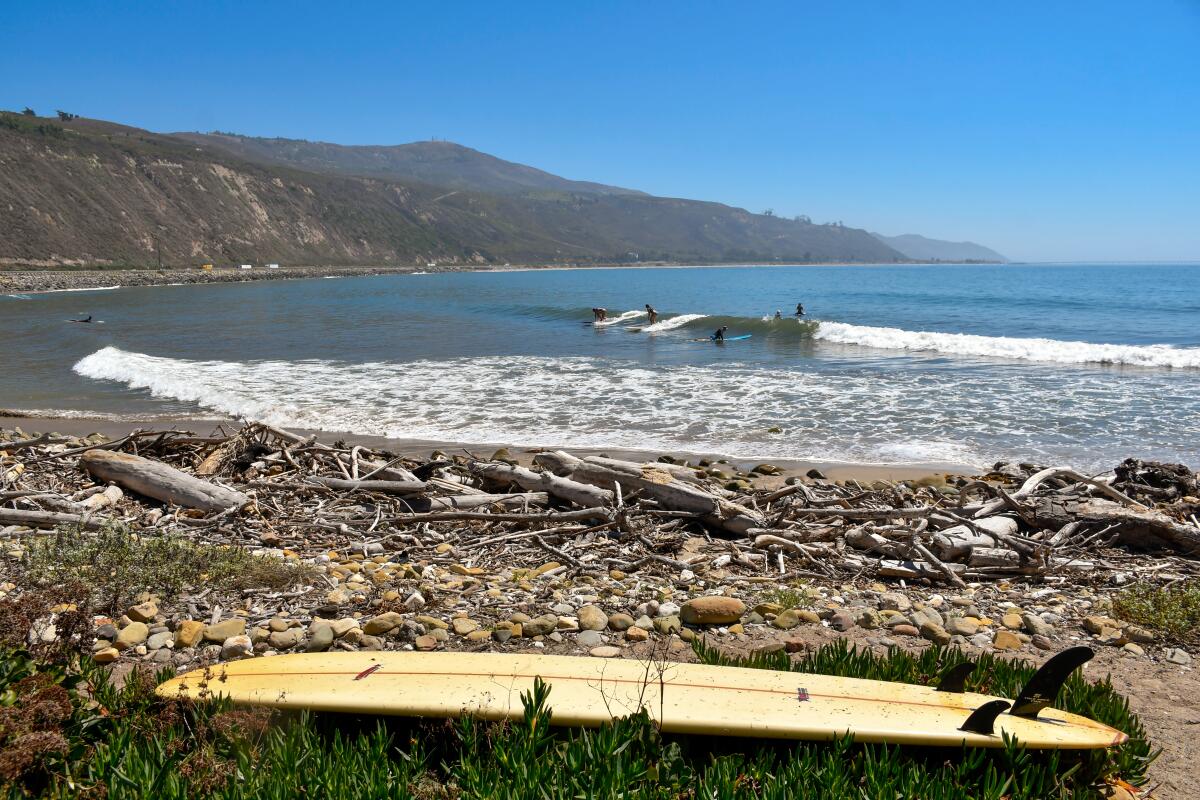
Savor the waves at Rincon Point
In fact, the Bates Road on the 101 leads to twin Rincon Point parking lots, one in each county. (Between them stands the small gated community of Rincon Point.)
Most surfers bear left to Rincon Point Beach, famed for its long-lasting, right-breaking waves, which wash up on a narrow, stony beach that’s on the Ventura side of the county line. (Technically, the parking lot and path to the beach are a noncontiguous sub-unit of Carpinteria State Beach.) The beach, nicknamed Queen of the Coast, is home to the Rincon Classic surfing competition every winter.
But that might not be for you. Most families and dog owners head right to the Santa Barbara County side, Rincon Beach County Park, where there are shaded picnic tables, a water fountain, bathrooms, stairs down to a sandier beach and a sign saying, “Nudity prohibited.” (This led me to expect nudity, but no, none was apparent that day.) It’s a great spot for a beach walk (with or without dog) or a mild body-surfing session.
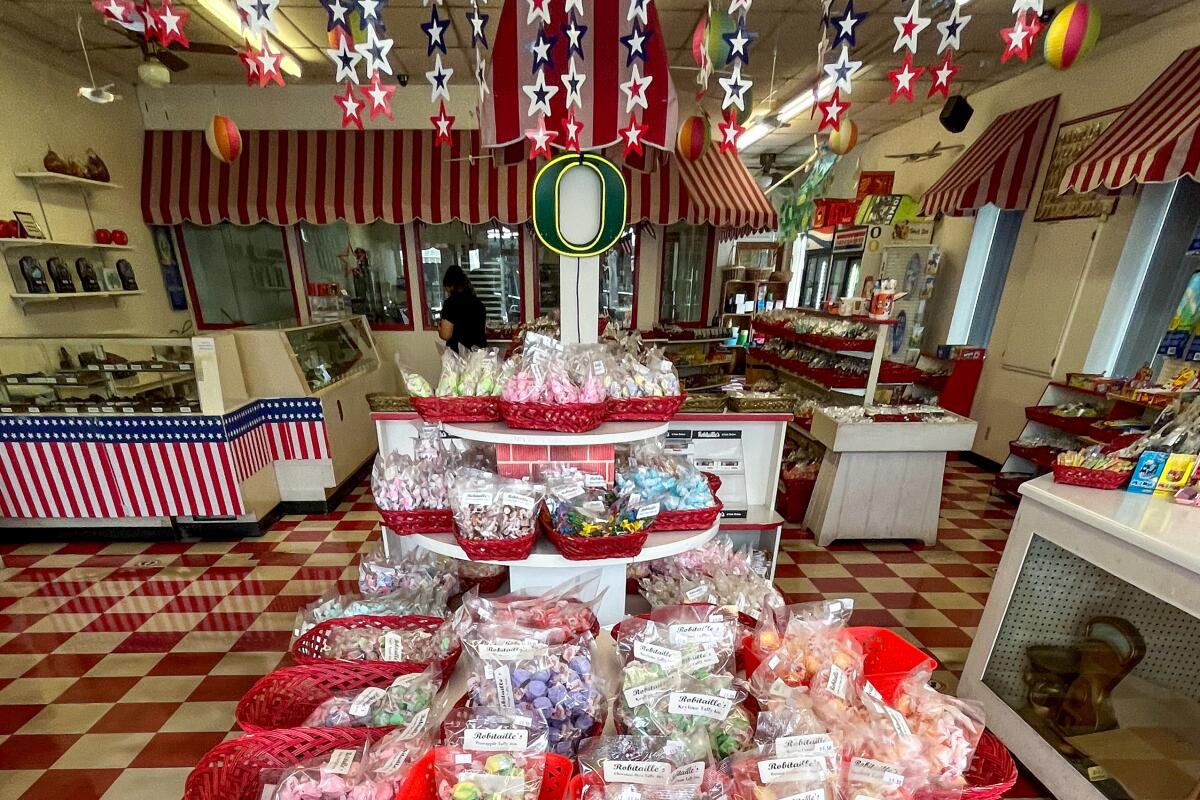
Pick something sweet at Robitaille's
Also, note the wall display celebrating Guy Robitaille (1929-2016), the entrepreneur, salesman, civic leader and Republican donor who persuaded Ronald Reagan to make Robitaille’s the official mints of the 1985 presidential inauguration. Other wall hangings celebrate Luc Robitaille, the hockey hall-of-famer and L.A. Kings president who is also part of the extended family.
Open 10 a.m. to 4 p.m. Tuesdays through Saturdays and 10 a.m. to 3 p.m. Sundays.
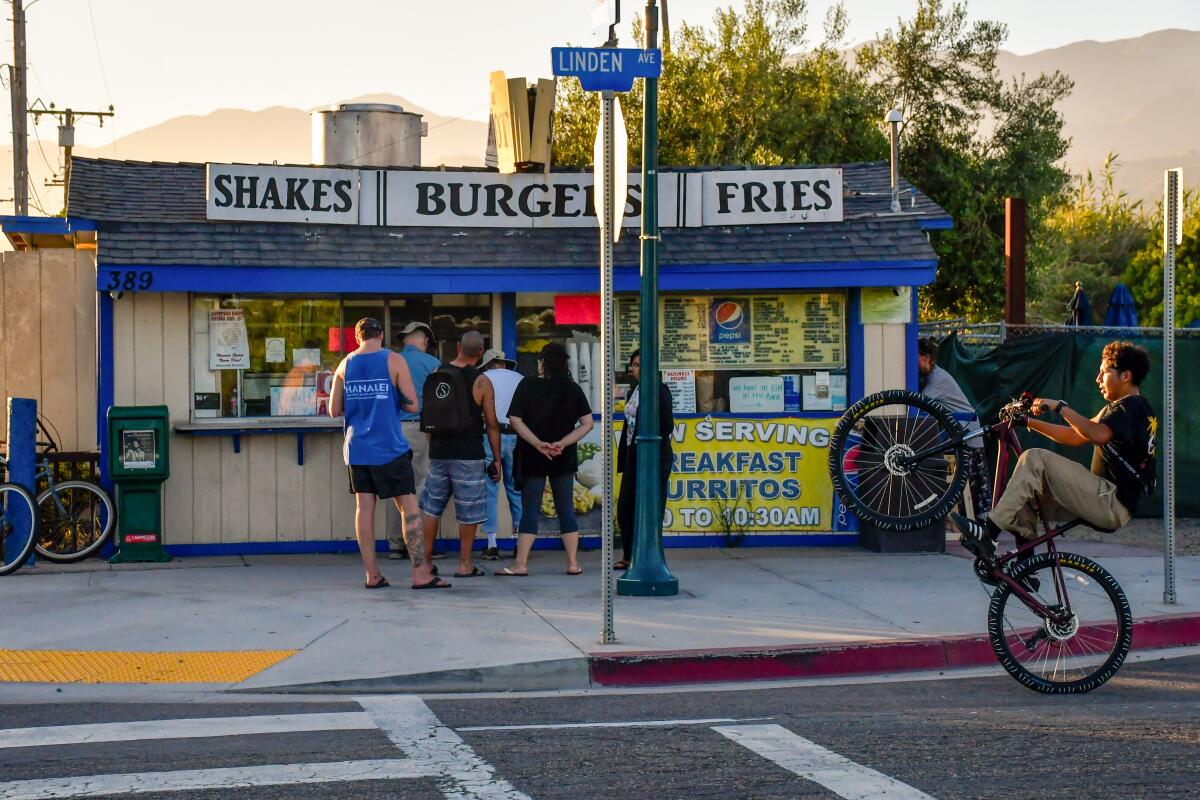
Gulp a burger at The Spot
This is also the only burger joint I know that publishes haiku. This one was posted on the Spot’s Facebook page back in July:
Tasty tacos from
the wooden hamburger stand.
Warm toes in the sand.
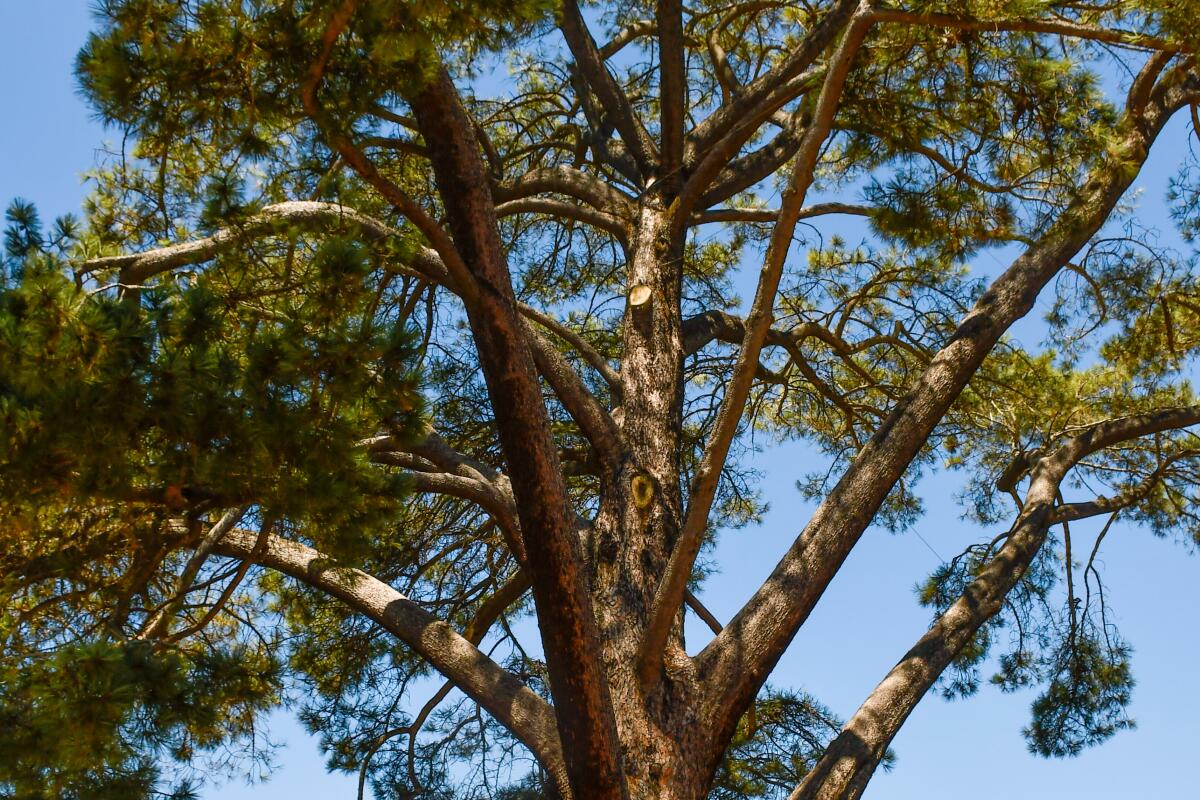
Gawk at a tall Torrey pine, maybe the tallest
Transplanted from Santa Rosa Island in 1888, the tree has grown to about 130 feet — about 100 feet higher than the average Torrey pine. Not that there are many average Torrey pines on hand to measure.
The species, now rare, is found mostly on Santa Rosa Island and on the northern coast of San Diego County. You can admire here, on a lot neighboring the busiest intersection in town, from the comfort of a patio table at Lucky Llama, a good little coffee spot. While you’re there, look in next door at Heritage Goods & Supply. It’s an outdoorsy boutique, open since 2016, that aims to outfit and inspire DIYers, especially women, offering workshops and stocking lots of Patagonia goods, art, jeans, bikinis, hats and blankets.
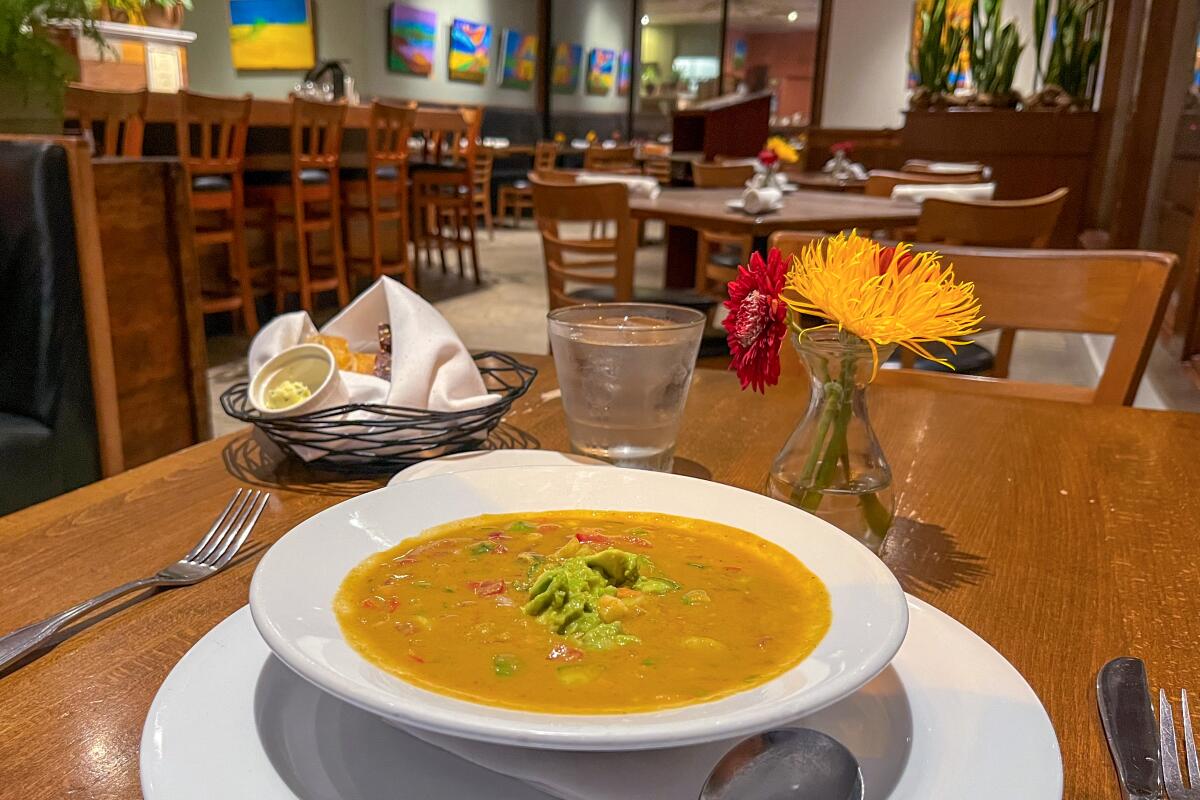
Dine at Zookers
And that dinner was good. First gazpacho (because it was a hot day), then roasted pear salad. The menu leans toward seafood and Italian, served in a date-appropriate dining room lined with bold-colored contemporary art. Dinner main dishes run $19 to $33. Zooker’s opened in 2000.
It serves lunch from 11:30 a.m. to 3 p.m. and dinner from 5 to 9 p.m. Tuesdays through Saturdays.
Sign up for The Wild
We’ll help you find the best places to hike, bike and run, as well as the perfect silent spots for meditation and yoga.
You may occasionally receive promotional content from the Los Angeles Times.



